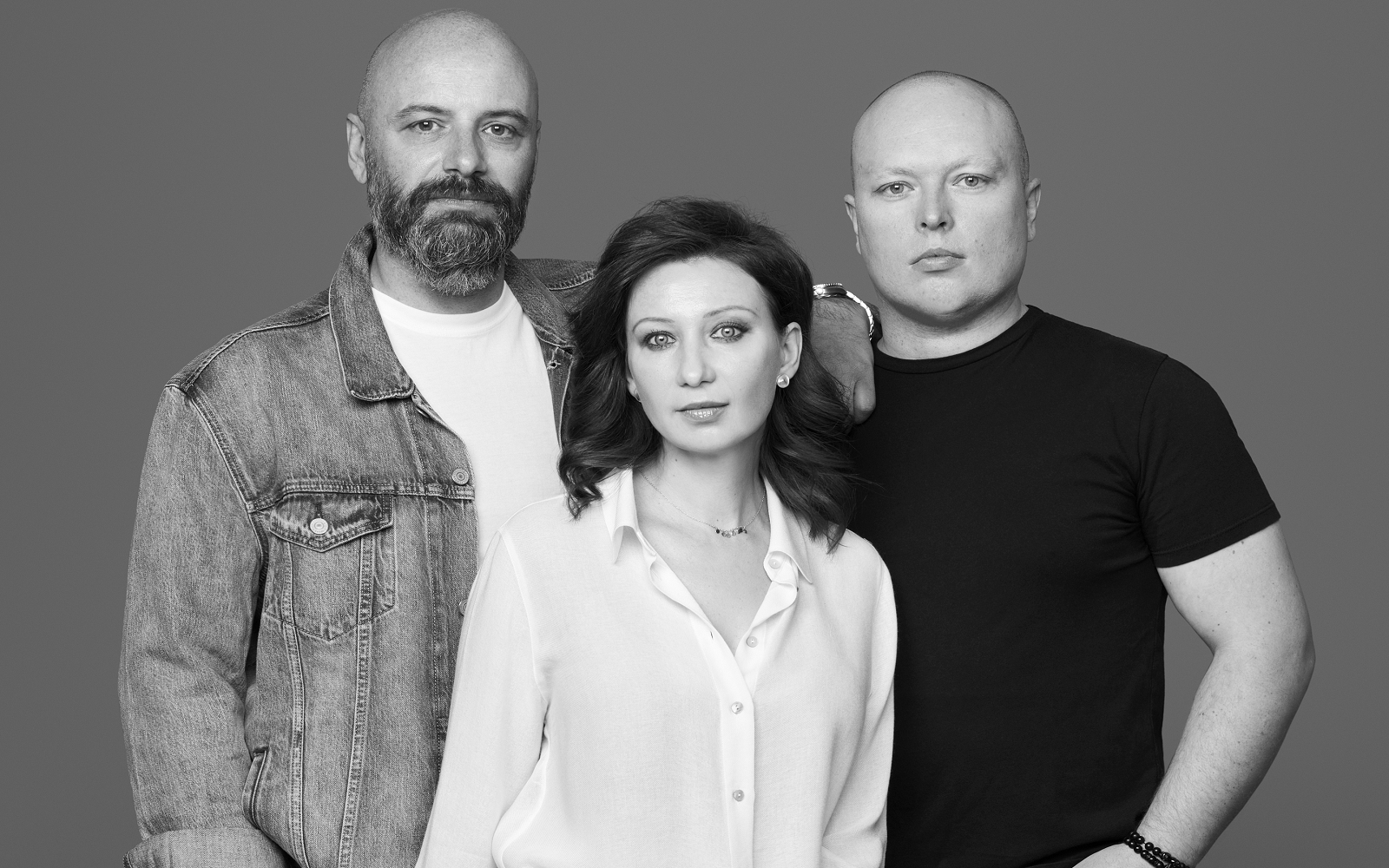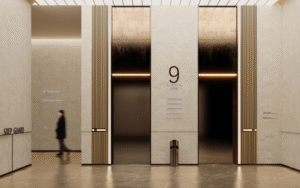With The Ritz-Carlton, Mexico City having recently opened its doors, the design team at Chapi Chapo Design created a bold interior design statement for the brands city debut. We caught up with partners Tatiana Sheveleva, Boris Mathias and Loris Ognibene and dug a little deeper into the hotel concept…

Soaring into the Mexico city skyline, the newly opened Ritz-Carlton is situated in a stunning building, concepted by Taller G, features 153 guestrooms and suites. Transforming the cityscape and sitting amongst the country’s tallest buildings, the Ritz-Carlton, Mexico City is centrally located along the iconic Paseo de Reforma and showcases uninterrupted views of the famed Chapultepec Park. Capitalising on its enviable location and views, a double glass façade provides unique open-air terraces, inviting guests to discover a new perspective on the city at every turn, while each detail has been thoughtfully designed and curated by the design team at Chapi Chapo Design to immerse guests in the city’s rich culture.
So, to really understand the fabrics of the hotel, we thought we would catch up with the design experts.
Hotel Designs: You mention the design being about ‘breaking away from colonial influences’ and celebrating ‘indigenous roots’ – can you explain a little more about this? Were there any specific points of inspiration referenced throughout the design?
Boris Mathias: From the beginning, we wanted the hotel to represent a looking glass into Mexico City’s dynamic past, present and future. Rising 58 storeys above the city’s glittering skyline, the modern glass skyscraper’s extraordinary floor-to-ceiling windows inspired the hotel’s interior design journey. The hotel’s breathtaking panoramic views, from floors 37 to 47, invite guests to uncover Mexico City’s rich history, sparking curiosity and a desire to explore this city’s magical culture and to meet the people who call it home.
To bring this to life, we explored unconventional and surreal ways for the guests to gain a new perspective into this ever-evolving city like never before through storytelling. The hotel’s contemporary interior design draws inspiration from Mexico City’s profound influence on Surrealism by famed Mexican artists like Frida Kahlo, Gunther Gerzso and Leonora Carrington. It was in Mexico, in the 1930s and ’40s, that Surrealism’s scope expanded and diversified. Inspired by the Mexicanidad movement, which saw Mexican artists celebrating their indigenous roots in a rejection of colonial influence, its artists made some of their most mind-bending, visionary work. Like many of these artists who drew from sources that unlocked buried instincts and emotions, our modern interior design moves away from colonial influence and stereotypical forms of Mexican art and design by bringing ancient folklore and authentic indigenous storytelling moments to life.
Our design draws inspiration from surrealism and Mexico City’s history of juxtaposing a traditional culture with a modern world. It is not forgetting the past, but rather celebrating it in a modern world. For us, we didn’t want to try to create something traditional in a very modern building. The tradition and the history of the city envelopes you through the hotel’s remarkable floor-to-ceiling views, and that is what we wanted to compliment. In our design, we take advantage of that by directing the guests view to the exterior as it transports you through time. By using reflective materials, we reflect the exterior to the interior, playing with the guests’ perspective, thus creating a surrealistic experience.
To create a sense of calm, we used natural colours. Keeping materials true to their essence and not altering them is important in all luxury projects. Keeping with the inspiration of surrealism, we used reflective materials in certain areas to reflect the exterior and adjacent materials, to create a play of light and trompe l’oeil. Surrealism can be found in each of the guestrooms with the wall art’s 3-dimensional reinterpretation of the city scape outside and carpet patterns showcasing the layered topography of Mexico City’s actual landscape. Shades of smokey ash and deep blues are woven throughout the hotel while metallic fibres journey between the carpet of each hallway and corridor allowing the spirits to pass through and greet each guest. This concept offers respect to Tezcatlipoca (Aztec God of Night and Smoking Mirrors) and Mexico’s Día de los Muertos (Day of the Dead), which celebrates and welcomes back the spirits of loved ones who have passed.

Image credit: Chapi Chapo Designs/ Ritz Carlton
HD: What made this project different from others you have worked on?
Tatiana Sheveleva: At Chapi Chapo Design, we view each project as a custom design. It is very important to us that our clients are given a bespoke design, unique to their hotel but also as a one-of-a-kind contribution to the community, city and country that they can be proud of and that honours and respects their heritage. We do so by researching everything from the country, city and neighbourhood that the hotel will be built in, to their history, culture and traditions.
The Ritz-Carlton brand and Mexico City are similar in some respects. Both are established and immersed in tradition; neither forgets about their history, and they both look towards the future. We too looked to the past to inform us of what the future could be, which is why we were so inspired by Mexico City’s profound influence on Surrealism. One factor that makes Mexico surreal is not only its diverse landscapes but also its mythical storytelling. “Mexico still lives in this magical atmosphere that is meant to clash with the modern ideologies but instead they seem to co-exist in perfect harmony, resulting in a surrealist experience” wrote Karina Alanis, author of the book Surreal Interpretation of Mexico.
As designers, we believe detail is the baseline of quality and when you pay attention to detail, the big picture will take care of itself. At The Ritz-Carlton, Mexico City, details like reflective metals, mirrors and glass act as the juxtaposition of distant realities to activate the unconscious mind in the hotel’s public areas, spa and guest rooms. These reflective elements distort the surrounding traditional Colonial architecture while inviting them in for the guest to metaphysically experience Mexico City’s past, present and future.

Image credit: Chapi Chapo Designs/ Ritz Carlton
HD: Where there any project specific design challenges during the course of the project?
Loris Ognibene: The idea behind the tall and twist architecture is to have an extraordinary view from each window to the city and Chapultepec Park. It is a truly magnificent panoramic view from each of the hotel spaces and from each guest room and suite. Rising 58 storeys in the heart of the city, the home of The Ritz-Carlton, Mexico City adds a striking structure to the city’s skyline. These architectural characteristics challenged our team in many ways during the design process. Unlike most hotels that have identical floor plans for each room category, The Ritz-Carlton, Mexico City does not – which is what makes the hotel so unique. Almost every single room and suite layout was unique and therefore each design and install had to be custom-made to fit the layout of each of the hotel’s guestrooms.

Image credit: Chapi Chapo Designs/ Ritz Carlton
HD: Lighting features strongly throughout the design – can you tell us a bit more about the role of lighting in your design.
BM: Lighting is very important for the design of any project. Proper light can highlight the features of the space and can make them even more special. Soft light has the ability to create a warmer and more comforting atmosphere which is essential in a hotel’s design. As hotel interior designers, we always want to create spaces that allow the guest to relax and unwind from their busy lives and this is most important in luxury city properties where guests are looking for an escape. Lighting was important for The Ritz-Carlton, Mexico City as the floor-to-ceiling windows allow an incredible amount of natural light in, therefore we wanted the evening time to be a soothing respite to enjoy the city views at night. We love that we can manipulate light to create a calm and soothing oasis within a busy metropolis like Mexico City. The Spa is a wonderful example of this because it is one of the only areas within the hotel that is hidden from all the natural light that shines inside the building.

Image credit: Chapi Chapo Designs/ Ritz Carlton
HD: Personal favourite design detail in the project?
TS: There are so many different aspects and nuances to a hotel’s design but as designers we believe the most important detail is not something you will see with your eyes, but that you will feel with your heart. Our goal is to create spaces that allow for the guest to create memories because that is what they remember most about their travels. We hope the endless warmth, comfort, peacefulness and elegance of the hotel’s design will be the unforgettable details that will remind guests of The Ritz-Carlton, Mexico City. A well-designed space is always the result of significant effort, time, and the brainstorming of multiple creative minds but it does not come to life without the hotel staff. One thing that makes this hotel so unique is that each guest room and suite has a different layout and view of the city and so every time you stay, you experience something new.

Image credit: Chapi Chapo Designs/ Ritz Carlton
HD: Finally, with issues of the environment and sustainability on everyone’s agenda – was this a consideration in any of the design elements on this project?
LO: It was very important for us, and our client, to use locally sourced and fabricated design elements such as millwork and furniture. As Covid-19 began to impact the world, this became even more significant as the borders started to close. This of course helped in reducing transportation costs and ultimately greenhouse gas emissions. At Chapi Chapo Design, we always look at recycled materials such as furniture fabrics and wall coverings to be used in our projects. We look to use real materials that have a longer life span and that can be recycled in the future as well as specify low voltage, long lasting LED light fixtures. At Chapi Chapo Design, we believe it is important to do our part to help make a difference in any way possible.
Main image credit: Chapi Chapo Design






















